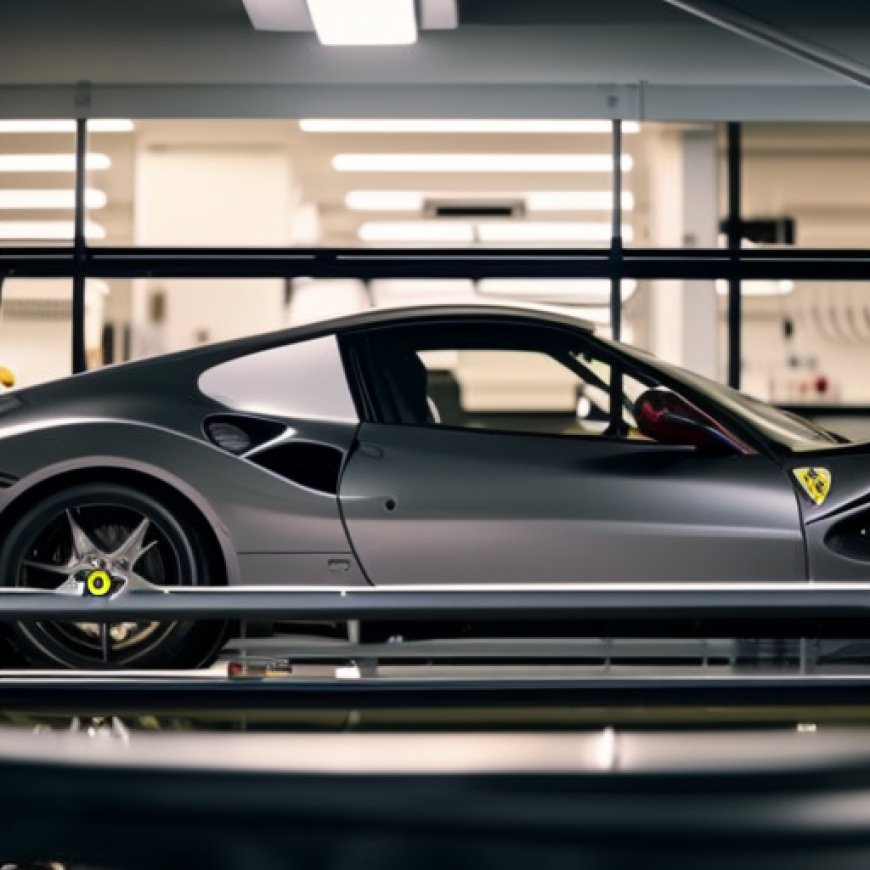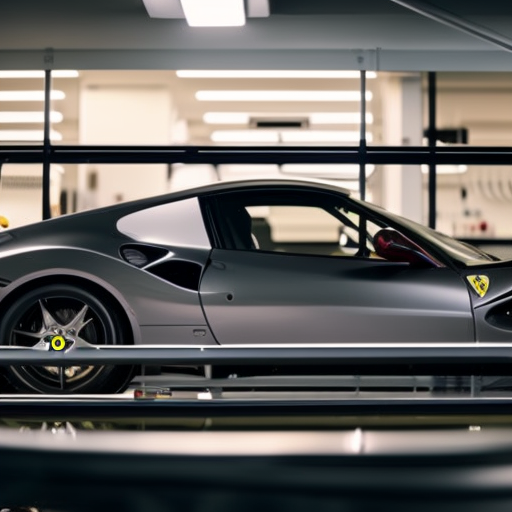Ferrari opens battery lab in northern Italy as it gears up to produce its first fully electric supercar
Ferrari opens battery lab in northern Italy as it gears up to produce its first fully electric supercar Fortune


Ferrari Unveils New Laboratory for Lithium Battery Research

Ferrari NV has announced the establishment of a new laboratory dedicated to the research of lithium battery cells. This move comes as the company prepares to launch its first fully electric supercar by the end of next year.
Focus on Sustainable Development Goals
- SDG 7: Affordable and Clean Energy – Ferrari’s research center aims to analyze solid states, fast charging, thermal charging, and cell safety and performance. These efforts contribute to the development of sustainable energy solutions for electric vehicles.
- SDG 9: Industry, Innovation, and Infrastructure – The establishment of the E-Cells Lab demonstrates Ferrari’s commitment to innovation and the development of advanced technologies in the automotive industry.
- SDG 11: Sustainable Cities and Communities – Ferrari’s transition to electric vehicles aligns with the goal of creating sustainable and environmentally-friendly transportation systems in urban areas.
The research center, led by scientists from the University of Bologna, will play a crucial role in CEO Benedetto Vigna’s efforts to bring Ferrari into the electric world. The company plans to unveil its first fully electric car in the fourth quarter of next year.
Competition in the electric vehicle market is intensifying, with Chinese company BYD Co. recently unveiling a high-performance EV to challenge Ferrari and Lamborghini. While both manufacturers have released hybrid models, they have yet to offer a fully electric supercar.
Accelerating Ferrari’s Plans
The newly established E-Cells Lab is expected to accelerate Ferrari’s plans for electric vehicles. The company has stated that it will share research results with its cell suppliers to enhance battery performance. These batteries will be assembled in Maranello, where Ferrari is constructing a new factory for hybrid and electric vehicles. The company remains on track to open the new plant in June.
Furthermore, any applications resulting from the research conducted at the lab will also be shared with technology partner Dutch chipmaker NXP Semiconductors NV.
While traditional carmakers have been focusing on battery technology for mass-market vehicles, high-performance cars like those produced by Porsche AG have unique requirements, such as the ability to withstand higher temperatures. Porsche AG recently acquired German lithium-ion specialist Custom Cells GmbH to manufacture batteries for its top-end vehicles.
Ferrari CEO Benedetto Vigna expressed confidence that the new lab will make significant contributions to the field of electrochemistry.
Last month, Ferrari announced a partnership with SK On to develop batteries for electric supercars. SK On, a South Korean company, has been a supplier to Ferrari for several years and provided the battery for the SF90 Stradale plug-in hybrid unveiled in 2019.
SDGs, Targets, and Indicators
| SDGs | Targets | Indicators |
|---|---|---|
| SDG 7: Affordable and Clean Energy | 7.2: Increase substantially the share of renewable energy in the global energy mix | – |
| SDG 9: Industry, Innovation, and Infrastructure | 9.4: Upgrade infrastructure and retrofit industries to make them sustainable | – |
| SDG 11: Sustainable Cities and Communities | 11.6: Reduce the adverse per capita environmental impact of cities, including by paying special attention to air quality and municipal and other waste management | – |
| SDG 13: Climate Action | 13.2: Integrate climate change measures into national policies, strategies, and planning | – |
| SDG 17: Partnerships for the Goals | 17.16: Enhance the global partnership for sustainable development, complemented by multi-stakeholder partnerships that mobilize and share knowledge, expertise, technology, and financial resources | – |
1. Which SDGs are addressed or connected to the issues highlighted in the article?
- SDG 7: Affordable and Clean Energy
- SDG 9: Industry, Innovation, and Infrastructure
- SDG 11: Sustainable Cities and Communities
- SDG 13: Climate Action
- SDG 17: Partnerships for the Goals
The article discusses Ferrari’s efforts to research lithium battery cells and produce its first fully electric supercar. This aligns with SDG 7, which focuses on affordable and clean energy. It also relates to SDG 9, as Ferrari is investing in innovation and infrastructure to transition to electric vehicles. Additionally, the article mentions the importance of reducing environmental impact and air quality in cities, connecting to SDG 11. The shift towards electric vehicles also contributes to SDG 13’s goal of climate action. Lastly, the partnership between Ferrari and its suppliers and technology partner highlights the importance of partnerships for achieving sustainable development, as emphasized in SDG 17.
2. What specific targets under those SDGs can be identified based on the article’s content?
- Target 7.2: Increase substantially the share of renewable energy in the global energy mix
- Target 9.4: Upgrade infrastructure and retrofit industries to make them sustainable
- Target 11.6: Reduce the adverse per capita environmental impact of cities, including by paying special attention to air quality and municipal and other waste management
- Target 13.2: Integrate climate change measures into national policies, strategies, and planning
- Target 17.16: Enhance the global partnership for sustainable development, complemented by multi-stakeholder partnerships that mobilize and share knowledge, expertise, technology, and financial resources
Based on the article, the specific targets that can be identified include increasing the share of renewable energy in the global energy mix (Target 7.2), upgrading infrastructure and retrofitting industries for sustainability (Target 9.4), reducing the environmental impact of cities and improving air quality (Target 11.6), integrating climate change measures into policies and planning (Target 13.2), and enhancing global partnerships for sustainable development (Target 17.16).
3. Are there any indicators mentioned or implied in the article that can be used to measure progress towards the identified targets?
No specific indicators are mentioned or implied in the article that can be used to measure progress towards the identified targets.
Behold! This splendid article springs forth from the wellspring of knowledge, shaped by a wondrous proprietary AI technology that delved into a vast ocean of data, illuminating the path towards the Sustainable Development Goals. Remember that all rights are reserved by SDG Investors LLC, empowering us to champion progress together.
Source: fortune.com

Join us, as fellow seekers of change, on a transformative journey at https://sdgtalks.ai/welcome, where you can become a member and actively contribute to shaping a brighter future.







